 Buying your own property is one of the most exciting and expensive times in our lives. Savvy and smart buyers know the general things to look out for – pests, termite damage, leaky pipes and pool fences. Unfortunately there is one more crucial, and often missed concern during the research phase – whether the property has been used as a meth lab or clandestine drug lab.
Buying your own property is one of the most exciting and expensive times in our lives. Savvy and smart buyers know the general things to look out for – pests, termite damage, leaky pipes and pool fences. Unfortunately there is one more crucial, and often missed concern during the research phase – whether the property has been used as a meth lab or clandestine drug lab.
As the number of meth labs being found and seized by police grows across the country, so too does the risk of buying a property that has been used to manufacture meth labs in the past.
Do you think you potentially new property has been used as a drug house in the past? Could you have already done so? Read on to get some peace of mind, or to learn the truth.
12 Keys Rehab Centre created an info graphic that can assist homeowners and potential homeowners to learn whether they are possibly dealing with a meth house.
Making or cooking methamphetamine requires minimal training and experience and limited amounts of equipment and chemicals, both of which are relatively inexpensive. Meth Labs can be found in almost any location, from houses, apartments, cars, rental storage units and motorhomes. There are many external recognition clues alluding to a meth lab including strong odours, windows covered with foils or plastics, excessive trash and rubbish or unusual structures being erected around the property.
Any property used for cooking meth must be acknowledged as a serious health and bio-hazard risk for current and future occupants. Residue generated in the cooking process can seep into walls, porous materials, furniture, sewage systems and ventilation units causing serious financial and health risks.
When a person enters a meth lab before it has been properly cleaned and decontaminated, contamination becomes a real and serious health risk. Immediate exposure to a meth lab is serious. Toxicity levels and the sudden release of gasses can lead to long term health issues and potential disability due to the associated respiratory effects of corrosive and poisonous gasses.
Further short and long-term health risks associated with meth labs can include eye irritation, respiratory issues, insomnia, skin irritation, nausea, vomiting, headaches and chest tightness.
The following, often in combination, may indicate the presence of a methamphetamine laboratory:
- Unusual odours including ether, ammonia, acetone, or other chemicals
- Frequent visitors, particularly at unusual times
- Extensive security measures or attempts to ensure privacy
- Secretive or unfriendly occupants
- Excessive amounts of trash, particularly chemical containers, coffee filters or pieces of cloth that are stained red, and duct tape rolls
- Curtains always drawn or windows covered with aluminium foil or blackened on residences, garages, sheds, or other structures
- Evidence of chemical waste or dumping
If you suspect that someone in your neighbourhood is operating a methamphetamine laboratory, report your concerns to the local police department immediately. For your own safety, do not investigate the suspected laboratory or confront the occupants. In addition to the hazards discussed above, many laboratories are equipped with security devices or booby traps that could cause serious injuries or death.
If you suspect you’ve purchased or are looking a purchasing a property which has been used as a meth lab in the past, contact Meth Lab Cleaners Australia for a no-obligation free chat, and we can help you in this exciting time.




